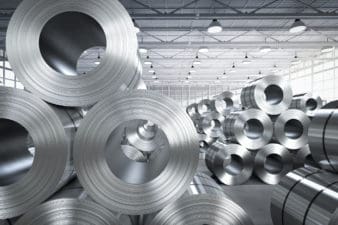In late 2011, gold prices peaked at approximately $1,900 per ounce, and have since retreated steadily to levels of over $1,200 per ounce at the end of 2013 and is currently still hovering around the $1,200 per ounce level. Coming off a period of record production and declining demand, why are gold stocks rallying and is this sustainable?
Stability of gold prices
In this market, the fact that gold prices have been hovering at around $1,200 per ounce in the last year or so is actually good news. When we are witnessing oil plummeting from $115 to under $70, or down 39% so far, a stable commodity price looks very appealing.
The best cure for low prices is low prices
This holds true, whether the cure comes in the form of reduced production or reduced cost of production, or both. We have seen that in the last few years, gold companies have taken a serious look at cost structures and have taken real steps to reduce costs and increase productivity and efficiency. Let’s take a look at some of the bigger gold companies that have improved their operations and generated some value in the midst of a difficult gold environment.
Agnico Eagle Mines Ltd (TSX: AEM)(NYSE: AEM): Agnico-Eagle Mines has seen its stock decrease 9.3% year-to-date. The company has initiated cost savings initiatives in order to preserve the balance sheet and boost cash flows. The company has reduced the capital budget and exploration expense by approximately $70 million in 2013, and expects to cut another $250 million in 2014.
IAMGOLD Corp (TSX: IMG)(NYSE: IAG): In the latest quarter, IAMGOLD reported increasing cash flows, decreasing costs, and increasing production. Cash from operations increased 19% sequentially and 78% year over year. Cash on hand on the balance sheet increased 42% to $334.4 million, thus improving the company’s financial flexibility and resilience. All-sustaining and cash costs decreased for the third consecutive quarter, with all-sustaining costs down 9.6% to $1,017. The debt to capitalization ratio at IAMGOLD is 18%.
Kinross Gold Corporation (TSX: K)(NYSE: KGC): While Kinross reported a net loss in its latest quarter due to income tax expense, it too, saw increasing production, declining costs, and increasing cash flow. All-in sustaining costs per ounce declined 15% to $919 per ounce, production increased a modest 2%, and a 22% increase in cash from operations. Lastly, Kinross has a debt to capitalization ratio of 25%, which is reasonable.
Yamana Gold Inc. (TSX: YRI)(NYSE: AUY): In its latest quarter, Yamana Gold was hit by one-time charges related to Chilean tax changes as well as an impairment charge for its Santa Luz project, as it reported a loss of US$1.2 billion. Digging a little deeper into the results, we see the same trends that we are seeing with the other gold companies listed in this article. Production increased 18%, all-in sustaining costs decreased 7%, and adjusted cash flow from operations increased 11% to $196 million.
The fate of gold prices is really dependent on many factors, including the health of the global economy, physical demand, and production levels of the metal. But at least at the company level, we are starting to see some of things that we, as investors, want to see, such as a renewed focus on improving efficiencies and cost structures.
Bottom Line
With oil stocks at risk today given the new price deck that they are dealing with, we can expect dividends to be put into question, capital investment to decline, and costs to come down sharply before these companies can recover lost profitability. At this inflection point, it makes sense that investors would look to other sectors. Gold stocks have underperformed in the last two years or so, and at this point investors are taking notice of some of the improvements that these gold companies have been making to their businesses.





